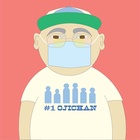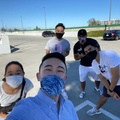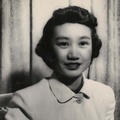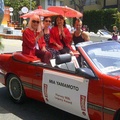If there’s anything that COVID-19 revealed, it is that xenophobia never went away; it was just hidden. With the rise of COVID-19 cases, hate crimes targeting Asians have increased after having decreased in the 21st century.
Xenophobia is the fear or hatred of foreigners, people from different cultures or strangers.1 It is the dislike or fear of the customs of people culturally different from oneself. It’s important to note that xenophobia is very similar to racism. However, it differs from racism because racism is rooted in the belief that race is the primary determinant of human traits, while xenophobia pertains to the foreign aspect of a person and not to the race of a person.

Xenophobia was a term coined back in the 19th century. Throughout history, however, communities all over the world have been affected by it. The Nikkei has experienced much xenophobia, as evinced in 1942, after the surprise military attack by the Imperial Japanese Navy Air Service on Pearl Harbor on December 7, 1941. This attack killed over 2,000 Americans, and from then on, Americans grew increasingly distrustful of the Japanese living in America. Americans did not distinguish between the Japanese living in Japan, and the Japanese immigrants living in the United States or Japanese Americans who were U.S. citizens. So in turn, they were grouped together, even though there was no evidence that Japanese Americans had orchestrated the attack. Thus, the Japanese Americans residing on the west coast of the United States became victims of hate crimes, based on their ethnicity.2 The government disseminated racist propaganda, and incidents of vandalism, verbal and physical abuse, and other hate crimes targeting Japanese Americans were prevalent in the U.S. for two months in 1942, leading up to the mass incarceration of Americans of Japanese descent that would follow immediately after.3
The hate crimes were based on the unfounded assumption that all Japanese Americans were spies for Japan. The public perceived them as foreigners, even though many were born or lived in America for years. With the increased fear of Japanese Americans, President Franklin Roosevelt issued Executive Order 9066 on February 19, 1942, which led to the incarceration of Japanese Americans with no evidence or due process.4 This Nikkei experience illustrates xenophobia’s role in history.
As time moves on, it’s easy to think that xenophobia has gone away, but in 2020, COVID-19 sparked a new wave of anti-Asian rhetoric, with the government perpetuating derogatory terms like the "Wuhan Virus" or "Chinese Virus" when referring to COVID-19.5 Recently in Torrance, a local Japanese business owner was a victim of a hate crime.6 This Japanese business owner and business had asked to remain anonymous for his safety, so in these paragraphs, I will call him the “owner.” This owner owns a business that sells Japanese cookware in the Torrance area. On June 19th, the owner came back to his business, with a note attached to his door. The note contained a multitude of threats and racial insults, including, “we are going to bomb your store,” "we know where you live,” and “go back to Japan you monkey.” Those statements are disheartening, and to see these statements written in 2020 exemplifies how little society has progressed in eliminating xenophobia. This business owner is just one of the few people in the Nikkei community who are victims of hate crimes due to xenophobia.
The parallels between the past and present xenophobia that has affected the Nikkei community are daunting and exemplify xenophobia’s existence in the past and present day. By comparing the cases, the Torrance Japanese American business owner became a victim of an anti-Asian hate crime, with no evidence or rationale that he had done anything wrong or that his foreign Japanese identity played a role in COVID-19. Having a sign placed on his business’s front door is also reminiscent of the propaganda posted on many businesses in 1942 that expressed hatred towards Japanese Americans. The xenophobia that exists within the public has sparked hatred towards Asian Americans, and the Nikkei community is just one community out of many suffering from these hate crimes. These parallels are eerily similar.
The Chinese American community has suffered a drastic amount of hate crimes due to the public’s xenophobia. The negative effects of xenophobia on the Chinese American community can be seen in the restaurant industry. In the beginning of February, Chinese American restaurants had a 20% decline in engagements which included phone calls, website visits, delivery orders, and reviews.7 In contrast, non-Chinese restaurants only took a 1% interest decline in February. In addition, the term “coronavirus” was mentioned in Yelp reviews for businesses in Chinatowns at ten times the rate of any other businesses.
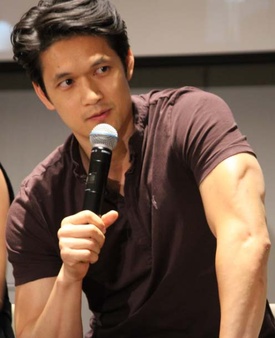
After seeing these reviews, many celebrities, such as Harry Shum Jr. and John Cho, promoted the engagement with local Chinatown businesses. However, Chinatown businesses continued to decline, and even the likes of celebrities could not combat xenophobia.
There’s no coincidence in this drop in interest in Chinese American restaurants. If the argument against xenophobia is that COVID-19 has prevented all people from going out and eating at restaurants, then all restaurants would be declining, however that isn’t the case and Chinese American restaurants suffered significantly more than other types of restaurants, affirming the effects of xenophobia in the present day.
Unfortunately, society often groups the entire Asian American population together and fails to differentiate between Asian ethnicities. This grouping has resulted in vicious hate crimes that have not only affected the Chinese American community but to the whole Asian American community.
On May 3 in Pasadena, California, a man was arrested for throwing a drink at several Asian American people while yelling racial slurs.8
On April 5, detectives determined that an Asian American woman taking out her garbage had acid poured on her by a man in Brooklyn.9
On April 20, in Orange County, California, during a second-grade class session held on Zoom, one student told the class he does not like “China or Chinese people because they started this quarantine.”10
These cases are only a few of the countless incidents reported (and unreported) in Southern California. This demonstrates that xenophobia has an alarming presence among a wide variety of people.
Even recent statistics show the spike in xenophobia in these times. Though in the 21st century, the number of hate crimes that occur towards Asian Americans have decreased, since March of 2020, with the recent COVID-19 pandemic, the number of hate crimes towards Asian Americans have increased drastically.11 From just March to April, the number of hate crimes towards Asian Americans have increased by 2%.12 What’s worse is that many of the hate crimes that involve Asian Americans are not even reported. So this 2% could be potentially be even higher, depending on the number of undocumented cases.
These hate crimes are not just verbal or written, these hate crimes involve assault. Out of the 1,710 incidents reported to STOP AAPI HATE (Asian Pacific Policy and Planning Council), 15% of these incidents involved either being coughed on, spat at, or even physical assault.13
In addition, 30% of Americans have witnessed Asian Americans being blamed for COVID-19.14 Asian Americans are not the only targets of hate crimes, but Asians across the world are being targeted. Hate crimes towards Asians are continually being reported in countries such as the United Kingdom, Canada, and many other countries. The overwhelming statistics clearly show that xenophobia is still a huge issue not just in America, but the world.
Although many steps have been taken to combat xenophobia, it still affects many people and remains prevalent in present day. To find a solution to the issue is not easy. Quite frankly, there might never be a perfect solution to this issue. This problem may still continue for many more generations to come. Furthermore, it’s important for one to understand that this problem still exists because of a failure to recognize it, which allows it to perpetuate further. If people can individually recognize the xenophobia that they have within themselves, perhaps they can change their way of thinking. But seeing the xenophobia that still takes place in 2020 exemplifies the lack of internal recognition in society. With the world continually progressing, it’s easy to think that xenophobia has either gone away or has slowly gone away over time. However, COVID-19 is a reminder that xenophobia has never left, it just made us see it clearer.
Notes:
1. “Xenophobia,” Dictionary.com.
2. “Japanese-American Internment During World War II,” National Archives and Records Administration, National Archives and Records Administration.
3. “Reports of Anti-Asian Assaults, Harassment and Hate Crimes Rise as Coronavirus Spreads,” Anti-Defamation League, 18 June 2020.
4. Jeffery F. Burton, Mary M. Farrell, Florence B. Lord, and Richard W. Lord. “A Brief History of Japanese American Relocation During World War II,” National Parks Service, U.S. Department of the Interior.
5. Ayal Feinberg, “Hate Crimes against Asian Americans Have Been Declining for Years. Will the Coronavirus Change That?,” The Washington Post, 13 Apr. 2020.
6. Tomoko Nagai and Ellen Endo, “Torrance Business Receives Hate Message,” Rafu Shimpo, 3 July 2020.
7. Vince Dixon, “By the Numbers: COVID-19's Devastating Effect on the Restaurant Industry,” Eater, 24 Mar. 2020.
8. “Reports of Anti-Asian Assaults, Harassment and Hate Crimes Rise as Coronavirus Spreads.” Anti-Defamation League, 18 June 2020.
8. Ayan Ajeen, “Press Releases,” CAIR, 8 Apr. 2020.
10. “Reports of Anti-Asian Assaults, Harassment and Hate Crimes Rise as Coronavirus Spreads.” Anti-Defamation League, 18 June 2020.
11. Ayal Feinberg, “Hate Crimes against Asian Americans Have Been Declining for Years. Will the Coronavirus Change That?,” The Washington Post, 13 Apr. 2020.
12. Conrad Wilson, “Oregon Hate Crime Reports Up 366% Amid Coronavirus Pandemic,” Oregon Public Broadcasting, 30 Apr. 2020.
13. Helier Cheung, Zhaoyin Feng, and Boer Deng, “Coronavirus: What Attacks on Asians Reveal about American Identity,” BBC News, 27 May 2020.
14. Alex Ellerbeck, “Over 30 Percent of Americans Have Witnessed COVID-19 Bias against Asians, Poll Says,” NBCNews.com, NBCUniversal News Group, 11 May 2020.
*This is one of the projects completed by The Nikkei Community Internship (NCI) Program intern each summer, which the Japanese American Bar Association and the Japanese American National Museum have co-hosted.
© 2020 Matthew Saito



